Giraffe are always fascinating to watch. Usually they are sedate and they spend a lot of time browsing leaves to provide nutrition for their enormous bodies. Recently at Kruger National Park we saw giraffes galloping away from an apparent threat, and later a giraffe nearly trod on a ground-roosting nightjar that otherwise we would have overlooked.

The young giraffe (Giraffa camelopardalis) in the photo above shows its flexible upper lip that in conjunction with a long (45 cm/18 in) prehensile tongue enables it to grasp and strip leaves off trees and bushes as it browses.

This giraffe is leaning forward and extending its tongue to grasp leaves at the top of a shrubby bush. A giraffe needs to eat up to 34 kg (75 lb) of leaves each day to sustain its massive body. Mature male giraffes weigh 1100–1932 kg (2420–4250lb) with adult females being considerably lighter – and shorter. Not only are giraffes the world’s tallest terrestrial mammals but they are also the largest of the ruminants.

Female and juvenile giraffes have thinner tufted horns compared to mature males that have thicker horns that are bald at the top. The horns, known as ossicones, are in fact solid bone that project from the skull and are covered with skin. Interestingly, at birth the ossicones are folded flat and surrounded by cartilage. As the giraffe grows the ossicones develop and the cartilage ossifies. By the time a giraffe matures at 3– 5 years old the ossicones are completely ossified and fully attached to the skull.

On the banks of the Letaba River, a male giraffe shows his thicker horns with the bald rather than tufted tops. When competing for matings, male giraffes may spar or even fight in necking contests, endeavouring to land a blow with the horns on the flanks or neck of the adversary. As the necks move in long arcs such contests can be surprisingly graceful, so much so that some people have mistaken them as being courting rituals! The necking contests are more a show of strength than anything else and opponents are skilled at dodging blows. However, when a blow is landed it packs quite a punch. The loud thud when a blow hits home can be staggering – quite literally for the recipient.

A huge jackalberry tree (Diospyros mespiliformus) on the banks of the Mphongolo River not far from Sirheni Bush Camp manages to dwarf this giraffe.

However, it still manages to reach some leaves.

A giraffe is able extend its head vertically and so extend its reach due to modified neck vertebra that makes this extension possible. So even though a male giraffe is on average 5.5 m (18 feet) tall to the top of the horns, the extra reach still comes in handy. Adult female giraffes are about 60 cm (2 feet) shorter than the males.

Giraffes have excellent eyesight and can retain visual contact even when they are dispersed over a wide area. They are non-territorial and live in loose herds with different configurations over time with no leader and very little coordination of herd movements. They spend most of their time feeding and their large size means they don’t have to bunch together for protection though mothers with calves do tend to associate together for safety with the added benefit that calves enjoy playing together.

This giraffe continued chewing steadily while peering at us over a bush. Giraffes definitely do not think it is rude to stare and sometimes their unfaltering gaze can be quite unsettling.

One morning we drove out from Shimuweni Bush Camp along the northern bank of the Letaba River that was flowing strongly and in this section the river had divided into several channels. On the far bank were several giraffes including an adult and juvenile that were drinking from the river. After a while the adult walked off through the water until suddenly it got a tremendous fright.

It turned and took off at speed, frightening the juvenile into flight too. Giraffe only have two gaits – walking and galloping. Here they were clearly galloping.

Off they went – they galloped up the ridge and disappeared at speed into the trees. We never did work out what frightened them off.

Meanwhile a little further downstream four giraffes were also on the opposite bank, one browsing a bit away from the river and the other three ambling along parallel to the water. But suddenly they too took fright, turned around and galloped off upstream in the same direction that the adult and juvenile had taken flight.

Two of the giraffes pictured above as they turned tail and fled at the gallop.

This was our last sight of them helter-skeltering off along the same ridge taken by the adult and juvenile. We never did figure out what spooked them so. We even wondered if somehow we had frightened them but then we realised there was a giraffe close by to us on the same side of the river as us. He seemed equally interested in and perplexed by the fleeing giraffes on the far bank.

Just below where we were parked in our car, the male giraffe came by while peering at the fleeing giraffes on the other side of the river.

He made his way down to the river and almost seemed as if he was looking for a way to cross, but then he turned and made his way back towards us. He seemed very calm and we thought it unlikely that he had been the cause of the flight of the other giraffes, but what do we know?

He then stopped to have a drink, manoeuvring himself awkwardly to bend his forelegs as he stooped down to the water.

While drinking he was joined by some buddies. They were all very calm in marked contrast to the fleeing giraffes that had just departed on the far side of the river.

Stooping awkwardly again for another drink, the giraffe partly bent and partly splayed the forelegs. Giraffe are very vulnerable to predators – from crocodiles to big cats – when they drink and so when they approach water to drink they are very cautious. Most giraffe drink water every few days or so, although some individuals manage to get enough moisture from the leaves that that they consume.

The giraffe’s buddies moseyed around for a while but did not drink. They walked away from the river and turned up towards the road. Giraffe’s walking gait is similar to a camel’s – the legs on the left side take the weight that is then transferred to the legs on the right side at each step. The scientific name Giraffa camelopardalis is interesting. The name giraffe derives from Arabic zarafa, probably from an African language.
The second part of the name camelopardalis literally means camel-leopard, reflecting that the giraffe has some physical similarities to a camel, and is spotted similarly to a leopard. Pard is an archaic name for leopard or panther. Leo-pard (lion-panther) reflects an ancient belief that a leopard was a hybrid of a lion and a panther (https://www.etymonline.com/word/giraffe)

Meanwhile back in Kruger National Park, we drove away from the layby overlooking the river and returned to the road thinking that we might intercept the giraffe leaving the river. We drove around the corner and there was the first of the giraffes crossing the road.
As the second one came up to the road a bird fluttered up suddenly from the ground before settling again – it seemed that the giraffe had nearly trodden on the bird as it sat camouflaged on the ground.

We eased up closer in the car and were amazed to find a nightjar settling back down beside the road as if trying to conceal itself on the hot ground. Yet there it was nestled down among some dry sticks and leaves on what appeared to be a dung midden.

It moved a short distance away from the dung onto stonier ground. It was late in the morning around 11.15 a.m. and it was baking hot on the dry ground with no shade and the temperature in the mid 30s Celsius (mid 90s Fahrenheit). The nightjar opened its beak and begain fluttering its throat muscles, the bird version of panting, dissipating the heat in a process known as gular fluttering. The process increases airflow across the moist inner surfaces of the mouth and throat, causing evaporative cooling.
Even though using gular fluttering to help reduce its body heat, it still seemed odd that the bird did not move to nearby shade. Being near the river it would have access to water to replenish lost moisture – nightjars drink as swallows do, swooping across the surface of the water with the bill open.

I think this is a fiery-necked nightjar. It’s slightly rufuous neck colouration forms a collar right around the back of the neck. Nightjars generally do roost and nest on the ground, though fiery-necked nightjars usually nest among leaflitter.
Fiery-necked nighjars are well-known for their so-called Litany call, as the song is said to resemble the phrase Good Lord Deliver Us. The male utters this call on repeat, and can call in succession over a hundred times. Calling is usually after dusk and before dawn but on a moonlit night calling may continue throughout much of the night.
In this short video there is a clip of the fiery-necked nightjar we saw in Kruger National Park with beak open while gular fluttering to cool down. After that are two clips I took in our driveway at home while listening to an unseen fiery-necked nightjar calling the Litany call at night. In the first clip I focus the camera on a street light, and in the second on the moon rising in the night sky.
Sources:
AskNature Team. 2016. The gular sack of nightjars helps to dissipate heat efficiently by vibrating. Asknature. https://asknature.org/strategy/gular-fluttering-dissipates-heat/; Estes, Richard. 1993. The Safari Companion a Guide to Watching African Mammals. Halfway House: Russel Friedman; Giraffe Conservation Foundation. 2022. Facts about giraffes. https://giraffeconservation.org/facts/; Roberts VII Multimedia Birds of Southern Africa: PC Edition. 1997-2016 Southern African Birding. For details go to http://www.sabirding.co.za/roberts7/portal.html
Posted by Carol



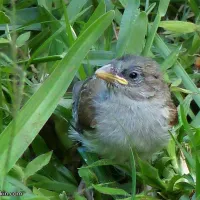
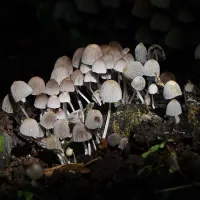
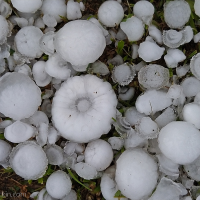
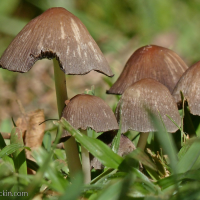
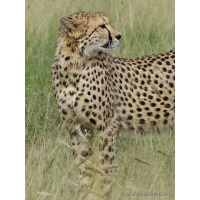
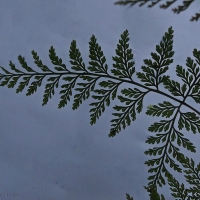
February 14, 2022 at 8:06 pm
A wonderful posting! How amazing to see those beautiful animals! I especially like the pics of the galloping giraffes. Galloping must be quite a task for such large animals. On a lighter note, I loved the sound bite of the nightjar. I can identify with them–how often do I say, “Good Lord, deliver us,” to myself after reading the daily news! 😉
Hope you are well!
Julie
LikeLiked by 1 person
February 14, 2022 at 9:04 pm
Thanks Julie. Yes that galloping gait seems to use an awful lot of energy.
Indeed the daily news is more than enough to invoke such a call!
We are well thanks, and I hope that you are too.
LikeLiked by 1 person
February 15, 2022 at 12:24 am
Thanks. We are well. Omicron is fading–we are hopeful (with fingers crossed) for the spring!
LikeLiked by 1 person
February 14, 2022 at 9:59 am
Fascinating photographs and information. You had me chuckling at the galloping giraffes and then sighing at that overheated nightjar. Thank you also for the sound clips.
LikeLiked by 1 person
February 14, 2022 at 6:39 pm
Thanks Mariss. It seemed so strange that the nightjar stayed out in the hot sun like that!
LikeLike
February 14, 2022 at 7:12 pm
Yes. I hope it wasn’t injured
LikeLiked by 1 person
February 14, 2022 at 9:01 pm
It didn’t seem to be injured – it flew up and away when disturbed by the giraffe and then settled back onto the ground – they are ground roosters and nesters and known to be efficient as using gular fluttering to regulate their temperature. It did move to a new place once, scuttling across the ground without any seeming difficulty. Perhaps it was intent on camouflaging itself especially as our car was quite nearby.
LikeLiked by 1 person
February 13, 2022 at 1:39 pm
Fabulous captures, I could almost feel being there seeing all this action! I’ve always loved watching giraffes at the zoo, to see them in the wild like this would have my adrenaline pumping. Wow, very cool looking bird too, great camouflage.
LikeLiked by 1 person
February 14, 2022 at 5:43 pm
Thanks Donna. Its not often that we have seen giraffes galloping like that – it was puzzling as well as fascinating to watch. Their adrenaline was certainly pumping! Seeing the nightjar was also a rare experience.
LikeLiked by 1 person
February 11, 2022 at 8:23 pm
What utterly marvelous portraits of the giraffes. But then who knew they could look so terribly awkward when taking a drink.
The video of the nightjar was certainly an added treat.
LikeLiked by 1 person
February 12, 2022 at 2:48 pm
Thanks Gunta. Giraffe are a peculiar blend of grace and awkwardness.
I recorded the call of the nightjar some time ago so it was nice to find a hook on which to use it! (I should have used a tripod though to avoid all the handheld wobbles!)
LikeLike
February 11, 2022 at 4:29 pm
Giraffes have always been my favorite 🙂
LikeLiked by 1 person
February 12, 2022 at 2:46 pm
A favourite of mine too 🙂
LikeLiked by 1 person
February 11, 2022 at 9:01 am
A wonderfully informative and interesting post. It was great to follow your own story of observing those giraffes. And if that nightjar is saying ‘Good Lord Deliver Us’, I’m a Dutchman!
LikeLiked by 1 person
February 12, 2022 at 2:45 pm
Thanks Margaret. It was interesting watching events unfold even though we were pretty much uncomprehending as to what was going on!
Interpreting the nightjar’s call as ‘Good Lord Deliver Us’ is fanciful. It is pretty much on par with constructing images from constellations of stars!
LikeLiked by 1 person
February 11, 2022 at 5:06 am
This is an interesting focus on giraffes – I usually take far too many photographs of them, so have enjoyed your careful selection. As for the nightjar: what a fortunate sighting! We hear the Fiery-necked Nightjars here every night and in the early mornings through much of the year – an absolutely beautiful sound.
LikeLiked by 1 person
February 12, 2022 at 2:42 pm
One might think a large animal like a giraffe is easy to photograph, but I find them quite challenging.
Yes it was fortunate, courtesy of the giraffes, to see the nightjar at such close quarters.
The call is beautiful, and even though repeated so often it is never tiresome. Perhaps nightjar is an unfair name, for the fiery-necked at least!
LikeLiked by 1 person
February 11, 2022 at 4:53 am
Great post, Carol. Giraffes are the dictionary definition of weird and wonderful. It must be a thrill to see them in the wild. Also interesting about nightjar’s close encounter. Must be a dangerous life being a ground nesting bird there.
LikeLiked by 1 person
February 12, 2022 at 2:39 pm
Hi Graham – its true what you say about giraffes being weird and wonderful.
The nightjars do seem to lead a most precarious existence. It is incredible how a scrape-in-the-ground nest can ever result in raising babies successfully!
LikeLiked by 1 person
February 11, 2022 at 2:28 am
Dear Carol, I love this blog, your observation, information and as always stunning photography of one of my favourite animals is so lovely, thank you! xxx
LikeLiked by 1 person
February 12, 2022 at 2:34 pm
Thanks Christeen. It seems giraffes are a favourite for many of us. Along with their size their unique beauty is hugely appealing.
xxx
LikeLiked by 1 person
February 11, 2022 at 12:11 am
Oh my heavens, Carol, this was terrific! Giraffes are one of my favorite mammals in Africa, and you superbly covered all of their beaut. I love to watch them gallop and your photos and descriptions highlighted it so well. Whimsical photos getting a drink, too. Fun to see the night jar too, and hear them in your terrific video. Great facts, wonderfully written…truly a joy.
LikeLiked by 1 person
February 12, 2022 at 2:32 pm
Thanks very much Jet. Its hard not to be charmed by the fabulous giraffes. Seeing the nightjar was amazing too. I have only seen them fleetingly at dusk before even when their calling makes it clear they are around.
LikeLiked by 1 person
February 10, 2022 at 11:59 pm
How wonderful it must be to see giraffes in the wild. I know them only from zoos, but their height, long legs, and just general lankiness has always fascinated me, similar to their awkward gallop. No other animal seems to move the way they do.
I also loved your photos and video of the nightjars, including their vocalization.
LikeLiked by 1 person
February 12, 2022 at 2:29 pm
We are incredibly lucky to still be able to see such fantastic animals as giraffes in the wild. They are beautifully strange with a lanky elegance despite some awkwardness at times.
It was amazing when the giraffes alerted us to the well-camouflaged nightjar.
LikeLiked by 1 person
February 10, 2022 at 11:46 pm
Fascinating post, Carol! Giraffes are such curious-looking animals and I love their long eyelashes. Lucky spotting of the nightjar. We have similar species here, both nightjars and whip-poor-will, which describes their call. Sadly, they are in steep decline. I used to see large flocks migrating in late summer, but last year, saw precious few. Scientists aren’t sure why, but I suspect habitat loss and pesticides reducing their insect prey.
LikeLiked by 1 person
February 12, 2022 at 2:26 pm
Indeed giraffe do have beautiful eyelashes!
I am very sad to hear about the tremendous decline in nightjars and likely also their insect prey too in another tragic knock-on effect. When will we ever learn?
LikeLike